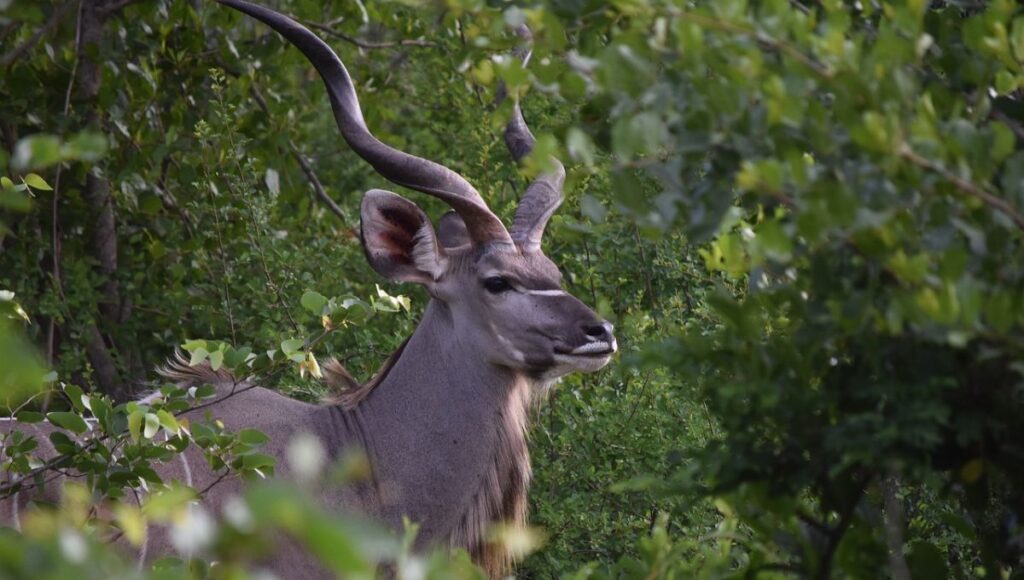Africa is famous for its huge grasslands and thick forests. It’s home to many amazing animals, including some with impressive horns like the big buffalo and the graceful antelope.
These animals are very important to nature and they also amaze us with their beauty and strength.
In this blog post, we’re going to learn more about these incredible horned animals of Africa, what they do in the wild, and the challenges they face to survive.
Understanding Horns in African Wildlife:
Horns are permanent, bony protrusions covered by a sheath of keratin found mostly in the Bovidae family, which includes cattle, goats, and antelopes.
In African wildlife, horns serve several critical functions: defense against predators, combat between rivals for mating rights, and as a display to attract mates.
Iconic Horned Animals of Africa:
1. African Buffalo (Syncerus caffer):
One of the ‘Big Five’ game animals of Africa, the African buffalo is known for its incredible strength and formidable horns. These curved structures form a continuous bone shield across the forehead, known as a “boss,” which is used effectively for defense and combat. African buffaloes are gregarious animals found in large herds across sub-Saharan Africa.
2. Rhinoceros (White and Black species):
Both the white rhino (Ceratotherium simum) and the black rhino (Diceros bicornis) boast impressive horns made purely of keratin. Rhinos use their horns for defense, to intimidate rivals and predators, and to dig for water and mineral salts. Unfortunately, these magnificent creatures are critically endangered due to poaching for their horns.
3. Gemsbok (Oryx gazella):
With long, straight horns that can reach up to four feet, the gemsbok is a stunning sight in the arid regions of Southern Africa. Both males and females possess these spear-like horns, which they use skillfully in defense against predators. The gemsbok is known for its striking appearance and incredible adaptability to harsh environments.
4. Greater Kudu (Tragelaphus strepsiceros):
Known for their spectacular spiraling horns, which can grow as long as three feet, the greater Kudu is one of Africa’s most beautiful antelopes. The horns, found only in males, are used in battles over dominance and mating rights. The kudu’s long horns and elegant stature make it a symbol of grace and power in African wildlife.
5. Impala (Aepyceros melampus):
The impala is a medium-sized antelope with slender, lyre-shaped horns found in males. These horns can grow up to 36 inches long and are used in defense and during rutting season to fight for harems of females. Impalas are known for their agility and can leap distances of up to 10 meters to escape predators.
6. Sable Antelope (Hippotragus niger):
The sable antelope boasts some of the most impressive horns among African antelopes, which curve backward in a majestic arch. Both males and females have these long horns, which can be used effectively against predators like lions. Sable antelopes are among the most endangered on the continent due to habitat loss and hunting.
Conservation Challenges:
Many horned animals in Africa are under threat due to poaching, habitat destruction, and human-wildlife conflict.
Rhinos, in particular, have been heavily targeted by poachers for their valuable horns, leading to drastic declines in their populations.
Conservation efforts, including anti-poaching patrols, wildlife reserves, and community-based conservation projects, are crucial to protect these species and ensure their survival.
The Role of Horned Animals in African Ecosystems:
Horned animals play a crucial role in maintaining the balance of their ecosystems. They act as grazers and browsers, helping to shape the vegetation and provide opportunities for other species to thrive. Moreover, they are key prey species for Africa’s large carnivores, maintaining the health and balance of predator populations.
Conclusion:
Africa’s horned animals are truly one of nature’s marvels, showcasing a variety of evolutionary adaptations and ecological roles. These animals are not only important for biodiversity but also contribute significantly to the cultural heritage and economies of African countries through tourism. Preserving these magnificent creatures is essential, not only for their survival but for the health of the entire ecosystem. By supporting conservation efforts and promoting sustainable practices, we can help ensure that future generations will also be able to marvel at these majestic animals.

